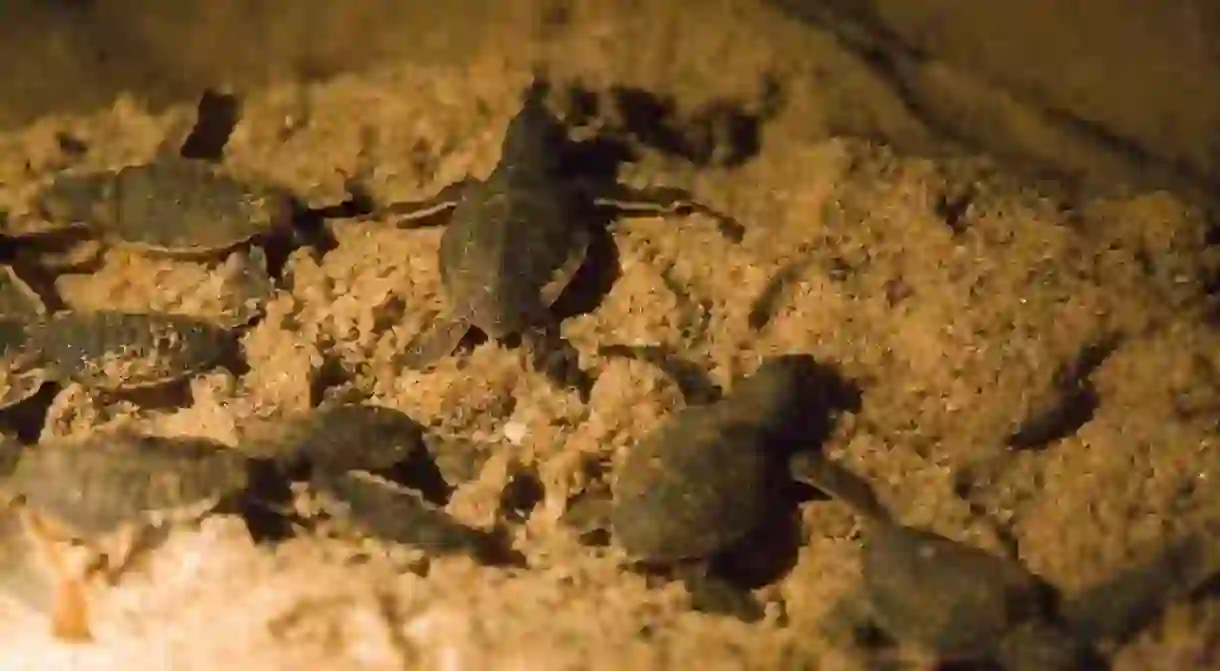Oman’s Turtle-Hatching Season Is Incredible, and Here’s Why

Have you ever watched turtles come out of the sea and dig in the sandy beach to make a perfect nest for their eggs? How about witnessing baby turtles hatching out of their eggs and starting their walk to the big sea? If not, keep reading to learn more about the turtles and their incredible journey in and out of the sea for the hatching season on the stunning beaches of Oman.
Turtle-hatching season in Oman
Annually, lots of turtles migrate to the beaches of the Arab Peninsula to lay their eggs. In Oman, the peak time for the turtles’ migration is between April and August of every year. Approximately 20,000 turtles come to some of Oman’s beaches, especially the eastern ones, to lay 50,000 to 60,000 eggs.

Turtles that visit Oman
There are seven different types of sea turtles around the world. Five of them visit the Omani waters and beaches; they are the Green Turtle, the Loggerhead Turtle, the Hawksbill Turtle, the Olive Ridley Turtle, and the Leatherback Turtle.

The best-known beaches in which turtles go to lay eggs in Oman are Ras Al Hadd and Ras Al Jinz in the region of Al Sharqiyah, the Masirah Island, Ad Daymaniyat Islands, the shores of the Dhofar region, and some of the beaches in the northeastern area of the country.
Ras Al Jinz is a natural reserve for turtles and is considered one of the largest nesting sites near the Indian Ocean. Meanwhile, authorities estimate that between 50 and 60 different turtles lay their eggs on the beaches of Ras Al Hadd every day, and one of Muscat’s most famous resorts, the Shangri-La Barr Al Jissah Resort, has around 52 turtle nests.

The turtles’ journey
The turtles come out of the sea very late at night. They crawl over the beach to get into a good spot, where they start digging a deep hole for their eggs. They use the tips of their paws to make the hole, and they use them again after laying their eggs to cover the nest. The reason why the turtles lay their eggs at night, and why they dig deep holes, is to try and protect their babies from foxes that seek out the eggs for food. That’s also why they return to the waters before sunrise.

After about 55 days, the eggs hatch, and the baby turtles start their journey to the sea, which is not easy and full of danger; they have to be careful not to get caught by hungry foxes, crabs or seagulls along the way.

Ras Al Jinz
Ras Al Jinz is a fishing village that lies along the shores of eastern Oman. It is known to be the biggest turtle reserve in the Indian Ocean and one of the world’s largest nesting sites for the endangered Green Turtles, which is why laws are strict and punishments harsh for anyone who tries to disturb the turtles or affect their natural habitat. Locals are always advised to be careful around the reserve and to report any turtle nests that they find. Even though there are many rules in place, tourists and visitors can still enjoy watching the process of the turtles laying eggs and the baby turtles hatching through tours run by specialists.














